You are using an out of date browser. It may not display this or other websites correctly.
You should upgrade or use an alternative browser.
You should upgrade or use an alternative browser.
What is Fluid dynamics: Definition and 631 Discussions
In physics and engineering, fluid dynamics is a subdiscipline of fluid mechanics that describes the flow of fluids—liquids and gases. It has several subdisciplines, including aerodynamics (the study of air and other gases in motion) and hydrodynamics (the study of liquids in motion). Fluid dynamics has a wide range of applications, including calculating forces and moments on aircraft, determining the mass flow rate of petroleum through pipelines, predicting weather patterns, understanding nebulae in interstellar space and modelling fission weapon detonation.
Fluid dynamics offers a systematic structure—which underlies these practical disciplines—that embraces empirical and semi-empirical laws derived from flow measurement and used to solve practical problems. The solution to a fluid dynamics problem typically involves the calculation of various properties of the fluid, such as flow velocity, pressure, density, and temperature, as functions of space and time.
Before the twentieth century, hydrodynamics was synonymous with fluid dynamics. This is still reflected in names of some fluid dynamics topics, like magnetohydrodynamics and hydrodynamic stability, both of which can also be applied to gases.
View More On Wikipedia.org
Fluid dynamics offers a systematic structure—which underlies these practical disciplines—that embraces empirical and semi-empirical laws derived from flow measurement and used to solve practical problems. The solution to a fluid dynamics problem typically involves the calculation of various properties of the fluid, such as flow velocity, pressure, density, and temperature, as functions of space and time.
Before the twentieth century, hydrodynamics was synonymous with fluid dynamics. This is still reflected in names of some fluid dynamics topics, like magnetohydrodynamics and hydrodynamic stability, both of which can also be applied to gases.
View More On Wikipedia.org
-
T
Speed usage in Lattice Boltzmann Method
One thing that confuses me is the physical speed and sound speed. The lattice sound speed cs=1/sqrt{3} corresponds to the physical sound speed for isothermal flow (sqt{RT}). Why isn't the physical speed (e.g. inlet speed up of lid cavity) converted and use accoringly? $$c_p=\sqrt{RT}≈330m/s...- TimeRip496
- Thread
- Replies: 1
- Forum: Mechanics
-

Measuring the Discharge Coefficients of a Rocket Injector
Hello everybody! I hope you are all doing well. I built a liquid rocket injector and the following feed system: I started to do hydro-static tests (cold flows) and a program I wrote records all the data for me (except for the flow rates which I measured experimentally by collecting the water...- Roy S Ramirez
- Thread
- Replies: 2
- Forum: Mechanical Engineering
-
L
I Optimal Copper Pipe Size for Misting System
I am attaching a standard 5/8" garden hose with approximately 70psi pressure to a copper pipe that is capped on the opposite end with mist nozzles mounted periodically along its length. I want the pressure at each mister to be as similar as possible. The hose attaches at the base, a solid line...- ljmorlock
- Thread
- Replies: 1
- Forum: Classical Physics
-

Fluid Dynamics - Mass Conservation, State Equation for an Ideal Gas
I understand that ##\dot m=\rho Q## and ##{\dot m}_{in}= {\dot m}_{out}## . So one can say that ##\rho Q_1 = \rho Q_2##. But I'm not sure if that equation is correct. I don't know if the density remains constant, or the volume flow rate. And then how I'm also supposed to tie a state equation in...- WhiteWolf98
- Thread
- Replies: 4
- Forum: Introductory Physics Homework Help
-
R
Circulation of water in a cylindrical reservoir
Fig1: Fig2: We haven't covered this topic yet, but they expect us to solve it and I'm not 100% sure what I'm doing. a) ##C_r =\oint{\vec{v}*\vec{dl}} = \int{\omega*r*dl} = \omega*\int{r*r*d\phi} = \omega*r^2*2pi## b) Now here I begin to struggle. If v is constant, can I simply pull it out of...- RiotRick
- Thread
- Replies: 1
- Forum: Advanced Physics Homework Help
-
S
Help with Bernoulli's equation for a central heating system
so far I have found the velocity 1 and 2 by dividing the volume flow rate over the area which I got from pi x dia squared/4 my v1 = 1.01859m/s and v2= 2.82942m/s i have then figured out a pressure for the 15mm pipe which i got an answer of 2.71 bar however i am stuck on the rest of the question...- ShaunG123
- Thread
- Replies: 6
- Forum: Introductory Physics Homework Help
-
X
Would acceleration under water affect the person?
I've searched online over multiple sites and can find no answer to this. I know the basics on acceleration, mass and few others. To try and paint the right picture, take a person and put him in a hollow object--a tube shape--and accelerate them. They are subject to inertia. Now take that person...- XDreamdwellerX
- Thread
- Replies: 10
- Forum: Mechanics
-

How can I predict the flow rate for a real life water hose?
Hello! I hope you are all doing well! I've been always intrigued by fluid mechanics and decided to try out a quick experiment with my water faucet. After using some equations I found online [1] [2], I plugged a hose to the faucet and let the water run. I filled a 1 quart bowl and recorded the...- Roy S Ramirez
- Thread
- Replies: 29
- Forum: Mechanical Engineering
-
D
Air Compressor Model Analysis
I have an interest in storing, for later use, energy from excess shaft power developed by a wind turbine. Currently I am assuming that the compressor is running in a steady fashion, continually drawing 300K, 1.0 atm. air into the compression chamber and compressing it to 20 atms. before...- Donahue Maverick
- Thread
- Replies: 1
- Forum: Mechanical Engineering
-
S
I Adhesive force between cutting oil and metal chips?
I am working on a project to remove cutting oil from waste metal chips. I need to know the retationship between viscous force of oil and centrifugal force required to remove oil from chips, so that I can calculate the RPM P.S Design is attached- Sandeep Swarup
- Thread
- Replies: 1
- Forum: Other Physics Topics
-

Fluid Mechanics: Determining Elevation in a Piezometric Tube
Homework Statement [/B] Homework Equations ##P=\rho gh## The Attempt at a Solution So this is the first time I'm doing fluid mechanics, and I'm trying my best to understand it. This was the first question, and truth to be told, I'm not very confident. I know what gauge pressure is: the...- WhiteWolf98
- Thread
- Replies: 10
- Forum: Introductory Physics Homework Help
-
C
I Trying to better understand what viscosity really is
I'm trying to get a better handle on the actual physical phenomena underlying viscosity (for Newtonian fluids). Something I could word in the format of "this happens (and this and this), and so the fluid resists flow." What I've found online is that when gasses are at higher temperatures, they...- caltrop
- Thread
- Replies: 9
- Forum: Other Physics Topics
-
L
I Massive Particles in Sonic & Slow Light Black Holes
I am working on a research project where I intend to describe what the Penrose process would like in a sonic black hole. I have found what a rotating (Kerr) black hole looks like in the sonic analog: https://arxiv.org/pdf/1802.08306.pdf I have also found that the analog of massless particles...- luke m
- Thread
- Replies: 2
- Forum: Special and General Relativity
-
T
Normal Stress Balance at a Fluid-fluid Interface
I am trying to determine a normal stress balance at an axisymmetric and dynamic fluid-fluid interface, ##z(r,t)##. For a static, free surface, this simplifies to the Young-Laplace equation: $$ \Delta p=\rho gz-\sigma2H=\rho gz-\frac{\sigma}{r}\frac{\partial}{\partial r}\left(r\frac{\partial...- tse8682
- Thread
- Replies: 51
- Forum: Mechanical Engineering
-

Shape of a bubble inside a rotating container
1. A closed cylindrical vessel filled with water (at room temperature) contains a small air bubble of normal pressure and volume ##V=1~{cm}^3## inside in it.The cylinder is then started to be rotated slowly with a small angular acceleration in a complete weightlessness (at a space station)...- Raihan amin
- Thread
- Replies: 5
- Forum: Advanced Physics Homework Help
-

How many O-rings would a mechanical engineer use here?
Hello everybody! Happy 2019! I'm trying to design a mechanical face seal for the part shown below, and I'm struggling with the number of o-rings I'm supposed to use. There are two cavities (rings) for two different fluids. The liquid dynamic pressure for both the internal and external fluids is...- Roy S Ramirez
- Thread
- Replies: 7
- Forum: Aerospace Engineering
-

B Why there is a difference between same components of 2 paral
In this context the author is deriving the net outflow through 2 surfaces.to do so he is calculating the difference between x components ofthe vector V which is; so now my question is here the 2 surface are parallel to each other and have same area so their respective x components should be...- Hawkingo
- Thread
- Replies: 2
- Forum: Other Physics Topics
-
J
Lubrication theory for two spheres -- Finding the resisting force
Homework Statement Show that the force resisting change of the minimum distance h between the surfaces of two rigid spheres of radii a and b which are nearly touching is: $$6\pi\frac{\mu}{h({a^{-1} + b^{-1}})^2}\frac{dh}{dt}$$ provided $$\frac{\rho h}{\mu}\frac{dh}{dt}$$ Homework Equations...- JyJ
- Thread
-
- Tags
- Fluid dynamics Force Spheres Theory
- Replies: 14
- Forum: Advanced Physics Homework Help
-
P
Is this kind of pressure chamber design possible?
Hi! Given that the chamber is airtight and no air leakage occurs, is the design in the picture below possible? Can the pressure inside the chamber cause the button (black part at the top) to be "pushed"? https://imgur.com/a/wOSD30D Obviously the temperatures are over-exaggerated, but the...- physsure
- Thread
- Replies: 5
- Forum: General Engineering
-

Which is the most efficient way to dive?
Hi Everybody! Lets say I have a sphere or an elipsoid of 10m3 full of air so it floats. I then open a valve that let's water in. At some point it will start to sink to the bottom. Let's say 100m deep. Once its down there I would like to refloat it. Which should be the most efficient method...- Juanmdq
- Thread
- Replies: 13
- Forum: General Engineering
-

Fluid dynamics: pressure in pipes
So I've been discussing this problem with my plumber dad. I uploaded the picture. I'm wondering if the pressure would change in the red pipe since the diameter decreases to 4 cm. Assume the 1st 10 cm pipe is full with water. Question: If the home pressure is 517 kPa going through first pipe... -

Pipe flow with precipitation at boundary
Homework Statement Consider a plug flow (slippery walls) with a uniform velocity ##U## in a circular pipe of diameter,##d## and length ##L##. The fluid is a supersaturated solution with a concentration ##c##. At the pipe wall, precipitation of solute happens at a net reaction rate per unit area...- Sizhe
- Thread
- Replies: 1
- Forum: Advanced Physics Homework Help
-
L
Other Asking for recommendation on Fluid Dynamics and CFD textbooks
Dear All I am an undergraduate student studying in physics. I would probably get into research that needed fluid dynamics and CFD (computational fluid dynamics) skills. Previously I have not been taking a formal fluid dynamics course since there is none. I would like to pick up those skills by...- Leonfeynman
- Thread
- Replies: 3
- Forum: Science and Math Textbooks
-
A
Calculating the velocity and pressure profiles across an axial fan
Hi, This is my first post on the PhysicsFormus I am trying to design an inlet and outlet for an axial fan and calculate velocity and pressure profiles in the duct. See the sketch attached. The ultimate goal is to carry out a CFD study but I was wondering if there is an analytical solution for...- alewarc
- Thread
- Replies: 11
- Forum: Mechanical Engineering
-
A
At what critical Reynolds number does vortex shedding begin?
In: "Fluid Dynamics", Chapter 3 (Turbulence), Section 26, Landau and Lifchitz analyze the problem of the stability of a steady flow past a body of finite size. The fluid is assumed to be incompressible and they reach the conclusion that perturbations that deviate from steady flows start to...- Anashim
- Thread
- Replies: 9
- Forum: Mechanical Engineering
-
J
MHB Pressure and Force - Fluid Dynamics
HI All, I have been out of education a long time and am now back at college. One of my modules is Fluid Dynamics and I am beginning to struggle with the basics and could really use your help. I have attached a snip from one of the example questions below given to me by my lecturer. For part...- jc911
- Thread
- Replies: 2
- Forum: General Math
-
F
Is Bernoulli's Equation Applicable for Finding Pressure in Hydraulics Problems?
Homework Statement Homework Equations y1+P1/##\gamma##+##\alpha##v12/2g = y2+P2/##\gamma##+##\alpha##v22/2g + hL The Attempt at a Solution so it gives me pressure at p2 but not p1. I tried using Bernoulli's equation to find p1 i did plugged into energy equation above and got an answer but...- fayan77
- Thread
- Replies: 7
- Forum: Introductory Physics Homework Help
-
K
How to calculate effective pump flow-rate across a filter?
My issue is related to the actual flow-rate I obtain when sampling air across a filtering membrane. Each pump reports a nominal amount of air that it can draw in a certain amount of time (i.e.: flow-rate, like 10 liters per minute), but this is generally reported assuming normal temperature and...- Kaeros
- Thread
- Replies: 2
- Forum: Mechanical Engineering
-
P
Other Ideas for a Physics Project (Fluid Dynamics)
I am a high school student interested in fluid dynamics, especially the Physics of ocean waves. So I'm hoping to do a science fair project about the Physics of sea waves, maybe for local science fair, or if it's really good, ISEF. The trouble is, I don't know what to do, especially because the...- PhysicsGuy12341
- Thread
- Replies: 6
- Forum: STEM Academic Advising
-

Measuring Torque on the Impeller Shaft of a Stirred Tank
Hi Everyone, I am working on a project which requires me to determine the torque on the impeller shaft of stirred tank. Currently as I see it, there are 2 viable options: To measure the torque in the shaft using a torque transducer such as this one. This is by far the most accurate means of...- runningman19
- Thread
- Replies: 10
- Forum: Materials and Chemical Engineering
-

Speed of fluid in a turbulent flow
Suppose a fluid passes from having laminar flow, to having a turbulent flow (like when passing after an object). How do fluid speed and fluid density change after that?- Domenico94
- Thread
- Replies: 3
- Forum: Mechanics
-

I Rocket-Jet Hybrid, Rocket + Ramjet
I read that a thrust augmentor can significantly increase the efficiency of a jet engine (http://www.pulse-jets.com/phpbb3/viewtopic.php?t=931). Now from my understanding, the thrust agumentor is sort of like a ramjet. Only, in this case, the cold air is being sucked in along with the hot air...- Julian Erickson
- Thread
- Replies: 4
- Forum: Other Physics Topics
-

I How does a fluid behave inside of a spherical cavity?
Suppose you have a spherical cavity, with a flow of a fluid ( in particular water), entering it from one side. What will happen to this flow? Will it create turbulences? Will speed increase? Will eventual waves entering the cavity be reflected, so creating waves with bigger amplitude? Suppose...- Domenico94
- Thread
- Replies: 3
- Forum: Classical Physics
-
B
Model pressure loss vs time for air in a cylinder w/ hole
Related to an engineering project I will be working on. The situation is that essentially I will have a closed cylinder (5.5 in x 26 in) with a small 15mm hole on the side (not on a circular face), which allows the air inside to be at equilibrium pressure/temperature with the outside. Then a...- bad throwaway name
- Thread
- Replies: 15
- Forum: Mechanics
-
F
Solving Fluid Dynamics in Syringe: Magnitude & Pressure
How would you go about solving the following problems regarding a syringe full of water? First, find the magnitude of force required to be applied to a piston of an 85ml syringe with a 60mm diameter tube to drain the tube in 25 seconds through an outlet of 10mm diameter? Second, what would the...- flutrpooch
- Thread
- Replies: 11
- Forum: Introductory Physics Homework Help
-
I
How long will it take for a gas cylinder to empty?
The main aim of my question is to find time taken by gas filled tank while emptying (from full to zero) it into atmosphere? I require a set of equations which might be used in the calculation of such a situation. Known parameters are: 1. Pressure inside the gas tank. 2. Dimension and shape of...- Infinity_a
- Thread
- Replies: 18
- Forum: Materials and Chemical Engineering
-
M
When will the barrel become half empty?
Homework Statement [/B] I'm not a native english speaker, so I apologize if my explanations are a bit awkward. I do not have a solution to this problem and I'd be grateful if someone could check this/help. I also have absolutely no idea how to even begin. Asked my colleagues, none of them know...- mathchimp
- Thread
-
- Tags
- Empty Fluid dynamics
- Replies: 1
- Forum: Introductory Physics Homework Help
-
A
I How Does a Pressurized Tank Empty Over Time Through a Hole?
I having difficulty wrapping my head around a concept that I wish to solve. I have a 10L tank of compressed air at 100psi. When an outlet hole of cross-sectional area of 0.115 in^2 is opened, I wish to develop a curve of pressure vs. time from t=0 until pressure drops to atmospheric. Many things...- ab042896
- Thread
- Replies: 3
- Forum: Other Physics Topics
-
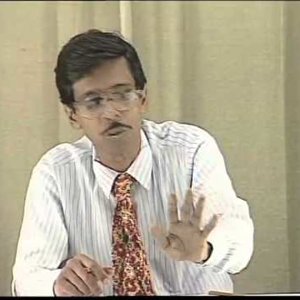
Fluid Mechanics by Prof. S.K. Som (NPTEL):- Lecture 1: Introduction and Fundamental Concepts - I
Copyright strictly reserved to Prof. Som and NPTEL, Govt. of India. Duplication prohibited. Lectures: http://www.nptel.ac.in/courses/105101082/ Syllabus: http://www.nptel.ac.in/syllabus/105101082/- Wrichik Basu
- Media item
- fluid dynamics mechanical engenereeing nptel
- Comments: 0
- Category: Engineering
-
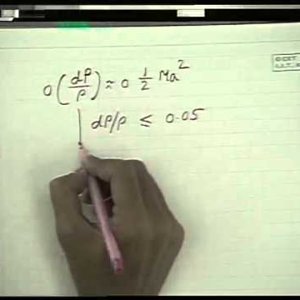
Fluid Mechanics by Prof. S.K. Som (NPTEL):- Lecture 2: Introduction and Fundamental Concepts - II
Copyright strictly reserved to Prof. Som and NPTEL, Govt. of India. Duplication prohibited. Lectures: http://www.nptel.ac.in/courses/105101082/ Syllabus: http://www.nptel.ac.in/syllabus/105101082/- Wrichik Basu
- Media item
- fluid dynamics mechanical engenereeing nptel
- Comments: 0
- Category: Engineering
-
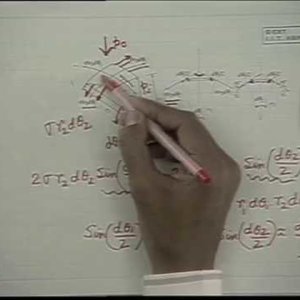
Fluid Mechanics by Prof. S.K. Som (NPTEL):- Lecture 3: Introduction and Fundamental Concepts - III
Copyright strictly reserved to Prof. Som and NPTEL, Govt. of India. Duplication prohibited. Lectures: http://www.nptel.ac.in/courses/105101082/ Syllabus: http://www.nptel.ac.in/syllabus/105101082/- Wrichik Basu
- Media item
- fluid dynamics mechanical engenereeing nptel
- Comments: 0
- Category: Engineering
-
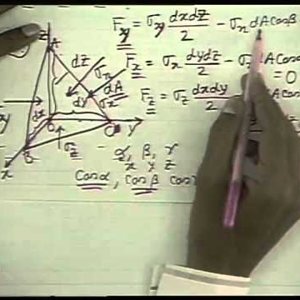
Fluid Mechanics by Prof. S.K. Som (NPTEL):- Lecture 4: Fluid Statics Part - I
Copyright strictly reserved to Prof. Som and NPTEL, Govt. of India. Duplication prohibited. Lectures: http://www.nptel.ac.in/courses/105101082/ Syllabus: http://www.nptel.ac.in/syllabus/105101082/- Wrichik Basu
- Media item
- fluid dynamics mechanical engenereeing nptel
- Comments: 0
- Category: Engineering
-
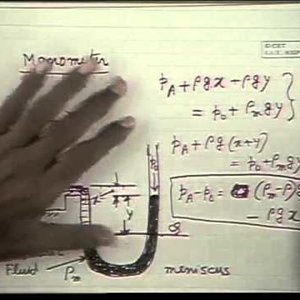
Fluid Mechanics by Prof. S.K. Som (NPTEL):- Lecture 5: Fluid Statics Part - II
Copyright strictly reserved to Prof. Som and NPTEL, Govt. of India. Duplication prohibited. Lectures: http://www.nptel.ac.in/courses/105101082/ Syllabus: http://www.nptel.ac.in/syllabus/105101082/- Wrichik Basu
- Media item
- fluid dynamics mechanical engenereeing nptel
- Comments: 0
- Category: Engineering
-
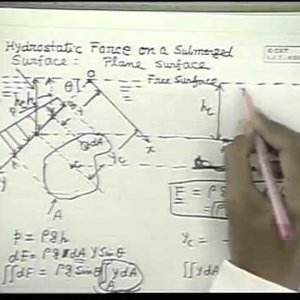
Fluid Mechanics by Prof. S.K. Som (NPTEL):- Lecture 6: Fluid Statics Part - III
Copyright strictly reserved to Prof. Som and NPTEL, Govt. of India. Duplication prohibited. Lectures: http://www.nptel.ac.in/courses/105101082/ Syllabus: http://www.nptel.ac.in/syllabus/105101082/- Wrichik Basu
- Media item
- fluid dynamics mechanical engenereeing nptel
- Comments: 0
- Category: Engineering
-
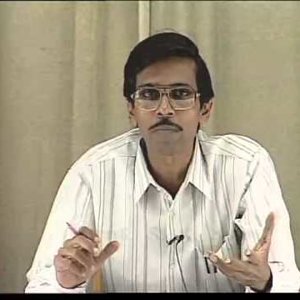
Fluid Mechanics by Prof. S.K. Som (NPTEL):- Lecture 7: Fluid Statics Part - IV
Copyright strictly reserved to Prof. Som and NPTEL, Govt. of India. Duplication prohibited. Lectures: http://www.nptel.ac.in/courses/105101082/ Syllabus: http://www.nptel.ac.in/syllabus/105101082/- Wrichik Basu
- Media item
- fluid dynamics mechanical engenereeing nptel
- Comments: 0
- Category: Engineering
-
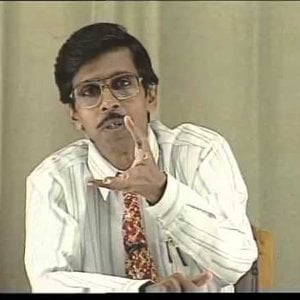
Fluid Mechanics by Prof. S.K. Som (NPTEL):- Lecture 8: Fluid Statics Part - V
Copyright strictly reserved to Prof. Som and NPTEL, Govt. of India. Duplication prohibited. Lectures: http://www.nptel.ac.in/courses/105101082/ Syllabus: http://www.nptel.ac.in/syllabus/105101082/- Wrichik Basu
- Media item
- fluid dynamics mechanical engenereeing nptel
- Comments: 0
- Category: Engineering
-
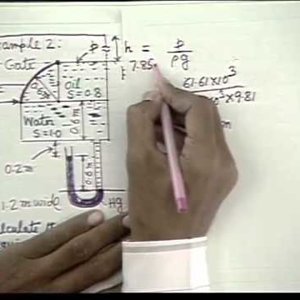
Fluid Mechanics by Prof. S.K. Som (NPTEL):- Lecture 9: Fluid Statics Part - VI
Copyright strictly reserved to Prof. Som and NPTEL, Govt. of India. Duplication prohibited. Lectures: http://www.nptel.ac.in/courses/105101082/ Syllabus: http://www.nptel.ac.in/syllabus/105101082/- Wrichik Basu
- Media item
- fluid dynamics mechanical engenereeing nptel
- Comments: 0
- Category: Engineering
-
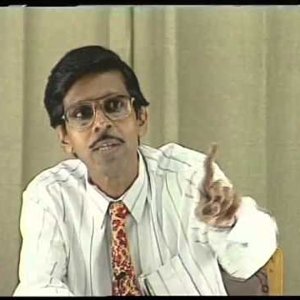
Fluid Mechanics by Prof. S.K. Som (NPTEL):- Lecture 10: Kinematics of Fluid Part - I
Copyright strictly reserved to Prof. Som and NPTEL, Govt. of India. Duplication prohibited. Lectures: http://www.nptel.ac.in/courses/105101082/ Syllabus: http://www.nptel.ac.in/syllabus/105101082/- Wrichik Basu
- Media item
- fluid dynamics mechanical engenereeing nptel
- Comments: 0
- Category: Engineering
-
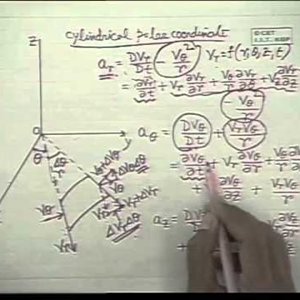
Fluid Mechanics by Prof. S.K. Som (NPTEL):- Lecture 11: Kinematics of Fluid Part - II
Copyright strictly reserved to Prof. Som and NPTEL, Govt. of India. Duplication prohibited. Lectures: http://www.nptel.ac.in/courses/105101082/ Syllabus: http://www.nptel.ac.in/syllabus/105101082/- Wrichik Basu
- Media item
- fluid dynamics mechanical engenereeing nptel
- Comments: 0
- Category: Engineering
-
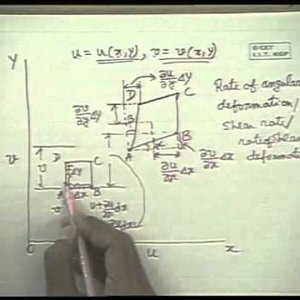
Fluid Mechanics by Prof. S.K. Som (NPTEL):- Lecture 12: Kinematics of Fluid Part - III
Copyright strictly reserved to Prof. Som and NPTEL, Govt. of India. Duplication prohibited. Lectures: http://www.nptel.ac.in/courses/105101082/ Syllabus: http://www.nptel.ac.in/syllabus/105101082/- Wrichik Basu
- Media item
- fluid dynamics mechanical engenereeing nptel
- Comments: 0
- Category: Engineering